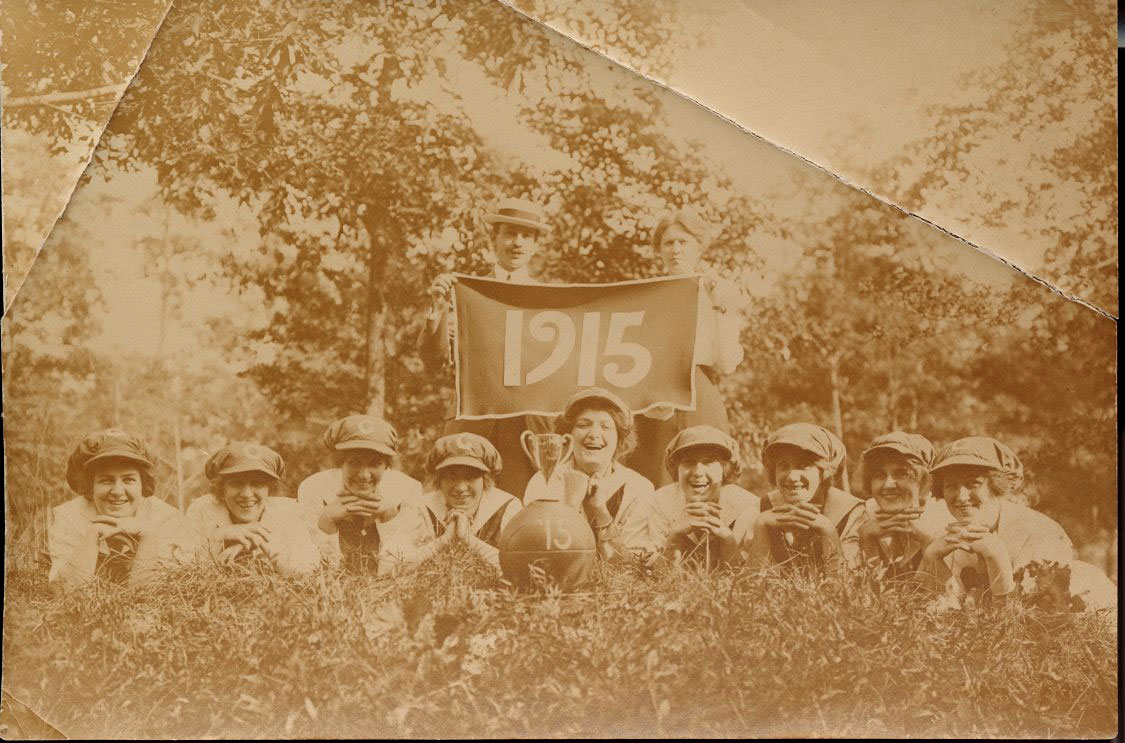
During the Training School decade, athletic activity on campus was both personal and intramural. Every student was expected to spend time outdoors, in the gymnasium of nature, the only one ECTTS had in the early days, for at least an hour each day, engaged in some form of physical activity. The most popular were cross-country walking, tennis, and basketball. In addition to individual exercise, students – virtually all female from early on – were organized to compete intramurally, with teams arranged according to curriculum and year. Coaching was done by the students under the supervision of faculty advisors. The idea was to train “the girls to be self-reliant and … enable them to carry on the work of an athletic league as well as to coach the game after leaving school.” The Thanksgiving game between juniors and seniors was an annual highlight, but the basketball tournament in January in which all classes competed for the Loving Cup, was the major competitive event of the year. Developing a keener sense of honor, courage, pride, and most of all, good sportsmanship was as much the objective of campus athletics as was physical exercise.
The Class of 1915, pictured here, was one of the more competitive. In its history, authored by Christine Johnson, the Class of 1915 recalled how they, as first year students in the fall of 1911, faced with the challenge of completing, in two years, their high school work before moving on to the two-year professional curriculum that would make them certified teachers. During that time, they became “thrilled by the game of basketball.” Johnson notes that the girls were divided into two teams, the Goblins and Dixies. The latter prevailed in the Thanksgiving game. From that year forward, the Class of 1915, which took as its slogan, “In unity there is strength,” was very athletically inclined and decidedly competitive in their play.
In their second year, the Class of 1915 took up tennis. During the Thanksgiving contests, they “proved their strength,” and presumably their athletic unity, by defeating the Juniors in tennis. The following year the girls had become Juniors, or “First Year Professional Class students.” Herbert Austin, pictured in the straw hat, served as advisor for the Class of 1915. With clear sadness, Johnson noted that “every Thanksgiving brings defeat to some class and this year it was extended to us on the basketball court by the Seniors.” Nevertheless, the Class of 1915 remained united in their determination to prevail, and emerged from the Junior-Senior tournament with victory and “a real loving cup.” This victory, Johnson related, was one of the great moments for the Class of 1915. The Class of 1915 was, Johnson noted proudly, the first to receive the Loving Cup at ECTTS.
The following year, their Senior year, the Class of 1915 won the Thanksgiving basketball game with the Juniors, and so had the pleasure of being entertained by them. And, in the following tournament, they emerged victorious again. Johnson related, “How great was our joy to be declared champions of the Training School.” The elation over intramural athletics in Johnson’s account reveals the extent to which ECTTS athletics, even without conference play or even a gymnasium, was a meaningful, passionate, and memorable dimension of campus life.
Sources
- Johnson, Christine. “History of Class of 1915.” Training School Quarterly. Vol. 2, no. 1. April, May, June, 1915. Pp. 59-60.
- “The Athletic League.” Training School Quarterly. Vol. 1, no. 3. Pp. 181-182.
- “Women's basketball team.” University Archives # 55.01.0082. J. Y. Joyner Library. East Carolina University. Greenville, N.C. https://digital.lib.ecu.edu/3215.
Citation Information
Title: Intramural Athletic Teams
Author: John A. Tucker, PhD
Date of Publication: 7/30/2019